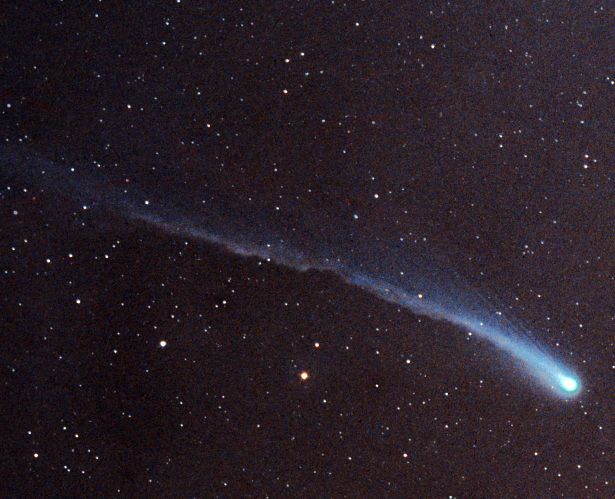
|
Credit & Copyright: Gerald Rhemann
Explanation:
In the last
week, Comet
Ikeya-Zhang
has become
bright enough to be just visible to the unaided eye.
Based on its present activity,
observers are optimistic that
Ikeya-Zhang
will become substantially brighter.
This composite
color
image from March 3rd, captured with a wide-field
telescope, shows this
active
comet's bright, condensed coma and
a delightful array of subtle structures in its developing
tail.
The bluish tail stretches for 5 degrees or so against a background of
stars in the constellation Pisces.
In the coming days
look for the comet hanging low in the
western evening sky (below a bright yellowish Mars), eventually
becoming difficult to see in the March twilight.
But after April begins,
Ikeya-Zhang
will become a predawn object
climbing higher into the morning sky as the month progresses.
Cataloged as comet C/2002 C1,
improved orbit determinations now
make it seem very likely that Comet
Ikeya-Zhang has been around here before.
Refined calculations
indicate this comet's last trip through the
inner Solar System was 341
years ago, in 1661,
when it was recorded as a
bright comet.
|
January February March April May June July August September October November December |
| ||||||||||||||||||||||||||||||||||||||||||||||||
NASA Web Site Statements, Warnings, and Disclaimers
NASA Official: Jay Norris. Specific rights apply.
A service of: LHEA at NASA / GSFC
& Michigan Tech. U.
Based on Astronomy Picture
Of the Day
Publications with keywords: comet - comet Ikeya-Zhang
Publications with words: comet - comet Ikeya-Zhang
See also:
- APOD: 2025 November 17 Á Comet Lemmons Wandering Tail
- APOD: 2025 September 30 Á Comet Lemmon Brightens
- APOD: 2025 September 29 Á Two Camera Comets in One Sky
- APOD: 2025 September 26 Á A SWAN an ATLAS and Mars
- APOD: 2025 September 18 Á Comet C/2025 R2 SWAN
- APOD: 2025 September 16 Á New Comet SWAN25B over Mexico
- APOD: 2025 July 7 Á Interstellar Comet 3I ATLAS
